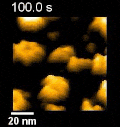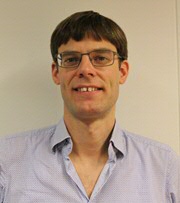Contact formation at the nanoscale: How do viral proteins reach out to start self-assembly?
The formation of viruses is a beautiful example of how nature creates fascinatingly efficient, and often also very dangerous, protein-based nanoparticles. Despite the huge impact of viral diseases on society, it remains largely unclear how the process of viral self-assembly takes place. The team of Wouter Roos from the University of Groningen, together with colleagues from Amsterdam and the USA, has now unraveled the mechanism behind the first steps of virus self-assembly. The researchers used advanced microscopy techniques to visualize how viral proteins find each other and how they start constructing the virus particle. Their findings are published 3 November in the journal Science Advances.

Many supramolecular machines, including viruses, spontaneously self-assemble from their elementary components through a series of reactions into complex, nanosized particles. Nature beautifully controls this process through an optimized relation between all steps, thereby preventing mistakes. Maybe because it works so efficiently and fast, the process of self-assembly remains largely elusive, let alone that we can copy it in synthetic materials. Understanding self-assembly at the single-molecule level is necessary to unveil factors that modulate the efficiency and fidelity of the process. When we possess this knowledge, new avenues for antiviral intervention and molecular therapeutics will open up.
The reason that viral self-assembly remains elusive, is because established techniques are not able to capture the dynamics of the tiny components in this process. In order to elucidate the mechanisms behind assembly, real-time visualization at the single molecule level is needed. Here we combine the powerful single-molecule techniques of fluorescent optical tweezers (OT) with the nanoscale, fast imaging technique of high speed atomic force microscopy (HS-AFM). This allows us to scrutinize the first steps of capsid assembly and nucleic acid encapsidation of Hepatitis B Virus (HBV).

While it was postulated before that assembly should proceed via intense protein-protein contacts, Roos and his colleagues now elucidated the kinetics of this process. By determining the energy landscape of assembly initiation and recording movies of this nanosized process, it was revealed that indeed the first steps in viral self-assembly occur via so-called contact-rich energy wells. Herewith, not only the first steps in HBV assembly have been elucidated, but also the old prediction about assembly occurring via energy-rich protein contacts has been confirmed. These insights likely also apply to other virus particles and could be used in nanotechnological approaches.
Reference
Virus self-assembly proceeds through contact-rich energy minima
Pedro Buzón, Sourav Maity, Panagiotis Christodoulis, Monique J. Wiertsema, Steven Dunkelbarger, Christine Kim, Gijs J. L. Wuite, Adam Zlotnick, Wouter H. Roos
Science Advances Vol. 7, eabg0811 (2021)
https://doi.org/10.1126/sciadv.abg0811
Roos lab website:
https://www.rug.nl/research/zernike/molecular-biophysics/roos-group/
More news
-
15 September 2025
Successful visit to the UG by Rector of Institut Teknologi Bandung
